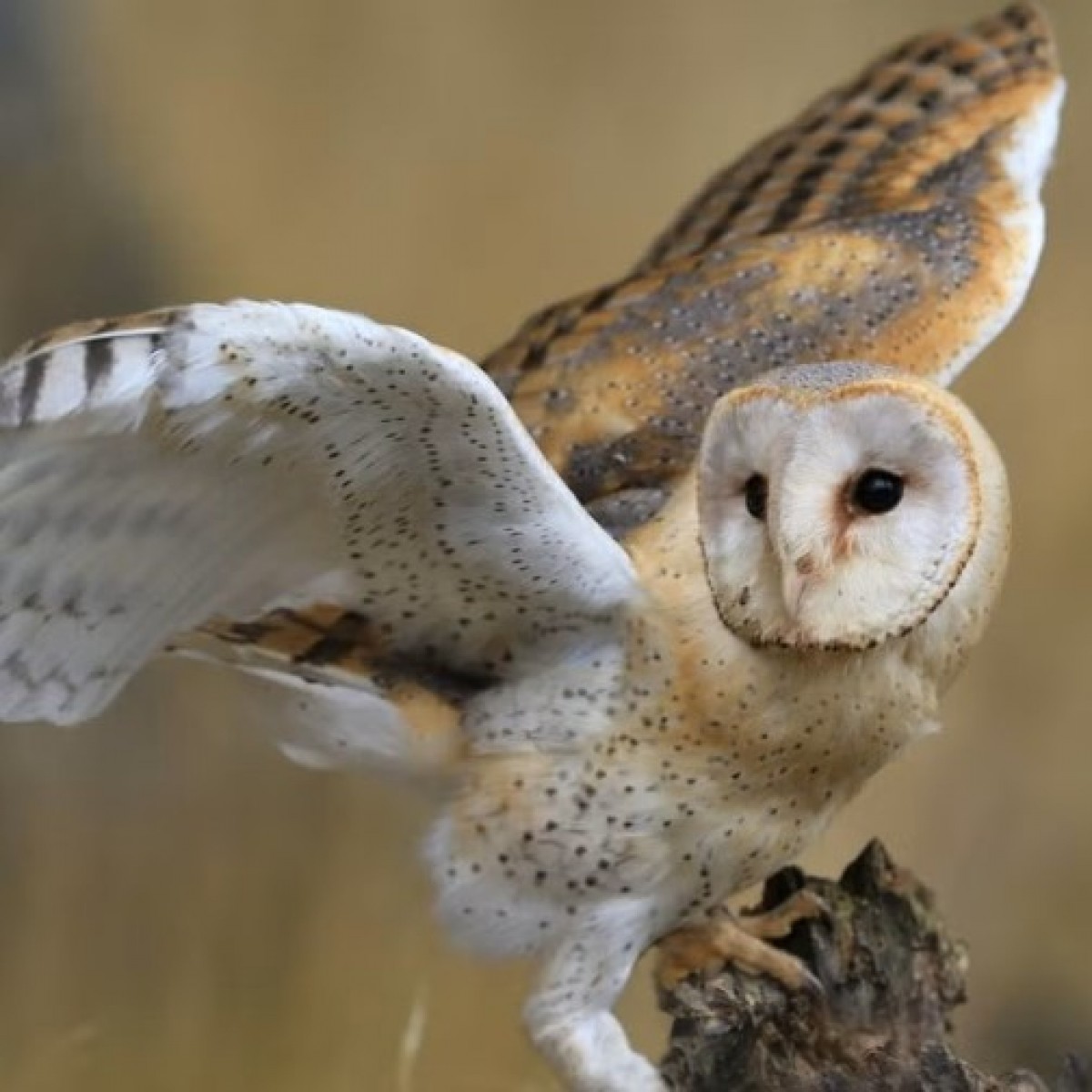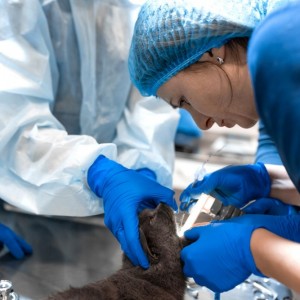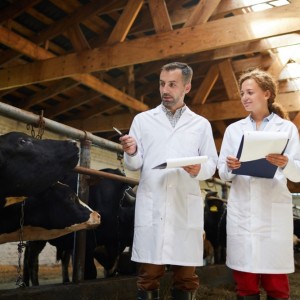Penn Vet’s Wildlife Futures Seek to Unravel the Mystery of the Disappearing Barn Owl
Barn owls seem made for this ghoul-and-goblin time of year.
Like creatures of folklore, they hunt only at night, silent flyers gliding low over moonlit fields. Their heart-shaped faces are ghostly white. Rather than the hoot-hoots of other owls, their raspy, eerie calls sound almost like screams.
If someone has a vermin problem, they couldn’t ask for a better ally. One barn owl family can catch and eat about 3,000 rodents a year. “The farmer’s best friend,” one Pennsylvania biologist called them.
But these special animals are in trouble. Barn owls are a Pennsylvania Species of Greatest Conservation Need, having experienced an over 50% decline in their statewide distribution, according to the last state survey, with no sign of rebound.
Penn Vet’s Wildlife Futures Program and the Pennsylvania Game Commission (PGC) have been engaged in a collaborative effort to identify the causes of these owls’ decline and any actions that might help them.
Loss of the open grassland habitats where these owls traditionally have found their prey has been recognized as a chief threat to their species’ continued survival. Wildlife Futures and PGC have been exploring other potential risks.
At times, answers have been elusive, but the biologists persevere.
“Wildlife Futures recently completed a multiyear study to investigate the effects of pesticides on the Pennsylvania barn owl population,” said Lisa Murphy, director of Wildlife Futures and Resident Director of the Pennsylvania Animal Diagnostic Laboratory System (PADLS).
The researchers’ theory was since rodents are the owls’ main food source, rodenticides consumed by their prey might be killing the owls. That, however, didn’t deliver a smoking gun.
“Preliminary results demonstrate relatively low exposure to anticoagulant rodenticides compared to similar data obtained for other wild bird and mammals in Pennsylvania and the surrounding region,” said Murphy, also a professor of toxicology, adding, “Additional analyses to assess exposures to neonicotinoids, a newer pesticide, are underway.”
While rodenticides don’t appear to be directly responsible for barn owls’ death, even that part of the study has been useful, according to Erica Miller, wildlife veterinarian and Wildlife Futures field operations manager.
“It gives us other directions to focus on instead of guessing, ‘Is it the rodenticide?’” Miller said. “The other thing is it has been a great opportunity to be able to train both the field staff and students as well how to collect samples from these birds.”
Learning about the owls and training students to work with wildlife
During the study field work, staff and Penn Vet students took blood samples from adult barn owls and their young. That gave the Penn Vet students, some who may go on to do wildlife work, experience safely and efficiently handling these birds of prey in the wild, Miller said.
Analysis was also done on barn owl pellets, which are compacted balls of parts of prey, such as bones and fur, that owls regurgitate because they cannot digest them.
As part of the study, dead barn owls, including ones found by the PGC, underwent necropsies by Wildlife Futures. Those will continue as more birds are found, Miller said. PADLS performed all the testing of the samples taken for the study from both living and deceased birds.
Barn owls will also be counted in Wildlife Futures’ ongoing research into the effects of West Nile Virus on Pennsylvania’s breeding bird populations.
“We are trying to learn from every owl that we obtain that doesn’t make it,” Miller said. “We want to know why, and to see if we can learn anything that can help us better understand what is happening to them as a population.”
Daniel Mummert, a wildlife diversity biologist and a founder of the PGC’s Barn Owl Conservation Initiative (BOCI) said the state is now engaged in its third breeding bird atlas, a survey of all the different species of birds that nest in Pennsylvania. Conducted by birders across the Commonwealth, it’s embarked on at 20-year intervals. The last survey, performed from 2004 to 2009, found that the distribution of barn owls throughout Pennsylvania declined by a little more than 50%, one of the steepest declines among the birds studied, according to Mummert.
Based on BOCI’s ongoing findings, the biologist believes the new study may uncover a further decrease. As part of its work, the BOCI does a yearly count of active barn owl nests. The two highest years were 2012 and 2013 with 75 active nests confirmed each year. In recent years, it’s been down to as low as only 24 nests confirmed throughout the state, Mummert said. While part of this decline is likely due to a decrease in the amount of time the PGC biologists have available to work on this project due to other demands, he said, habitat loss is also believed to be a reason for the decline in confirmed nests.
“I think one of the biggest things happening that’s affecting barn owls is just a decrease in grassland habitat on a large landscape level, and that’s why not only barn owls, but our other grassland birds, too, like meadowlarks, grasshopper sparrows, savannah sparrows, all those birds are declining at a steeper rate than any other group of birds in Pennsylvania,” Mummert said.
For barn owls, the loss of grasslands means the loss of meadow voles, the mainstay of the birds’ diet. Miller noted that many of the dead owls found and necropsied in the Penn Vet study were emaciated and relatively young.
The loss has been due to residential and commercial development, as well as the change from grassland farming to growing soybeans and corn. Meanwhile, animal health experts like Mummert and Miller note, barn owls have been welcomed by some vineyard and orchard growers and organic farmers as highly efficient pest control in places like California and Israel, and even by some growers in Pennsylvania.
Mummert said he and the other PGC biologists working on the BOCI have spoken with farmers and other landowners over the years about barn owls and ways to help them. That included retaining grassland on acreage not productive for agriculture and accepting barn owl nest boxes on their land. Since BOCI was formed 20 years ago, it has given out about 300 nest boxes around the state.
“If we can get people knowledgeable and excited about barn owl conservation,” Mummert said, “then they’re going to be much more likely to do things on their property that will help these declining birds, and hopefully we’ll continue to have barn owls and all our other grassland birds in Pennsylvania for the long term future.”
Author: Rita Giordano
Source: https://www.vet.upenn.edu/









List
Add
Please enter a comment